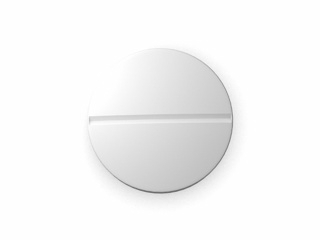Alopecia (hair loss, baldness)
Alopecia (hair loss, baldness) – 12 causes of alopecia
Alopecia (baldness) is a serious problem not only from an aesthetic and psychological point of view but also from a medical point of view. Hair loss not only causes psychological discomfort but may also indicate the presence of dangerous internal diseases. The appearance of active hair loss without subsequent replacement indicates that a serious hormonal or autoimmune failure has occurred in the body, metabolism is disturbed, or diseases such as secondary syphilis, lupus erythematosus, or dermatophytosis develop. Baldness is an unpleasant side effect of chemotherapy, skin lesions, or burns.
According to medical research, the rate of development of pathologies and complications has increased dramatically in recent years.
If urgent measures are not taken or ineffective treatment is used, powerful pathological processes will inevitably begin in the body, which will lead not only to baldness but also to serious impairment of the functioning of the body. But even in the case when alopecia is an independent disease, hair loss causes significant discomfort and leads to serious psychological problems.
Each person loses 50 to 100 hairs daily. Hair lives from 3 to 7 years. 90% of the hair on the head is actively growing, the remaining 10% is at rest. This phase lasts from 2 to 6 months, then the hair falls out. Hair usually does not thin out with age, but sometimes new hair does not grow in place of the fallen hair. This process can begin as early as adulthood. Hair loss can be caused by various medical conditions, hormonal imbalances, head trauma or damage to the scalp, stress, or certain medications. Hair often begins to grow back when the cause of hair loss is removed.
The causes of hair loss in women are varied. It also happens that improper care becomes the source of the problem. But most often the causes are more serious and require long-term treatment. To correctly diagnose the source of alopecia and choose the right treatment, you need to see a doctor.
Hair loss can be caused by 12 factors:
- Hormonal changes. Significant hair loss occurs in young girls during puberty. Pregnant women also suffer from hair loss. At the same time, baldness can persist after childbirth and will continue until the hormonal background is restored. Women also complain of hair loss during menopause.
- Chronic diseases. Hair loss can be caused by diseases (rheumatoid arthritis, lupus erythematosus), intoxication, infectious (pneumonia, tuberculosis), and gynecological (polycystic ovary) pathologies. These diseases are often accompanied not only by hair loss but also by a whole range of health-threatening symptoms that should be ignored.
- Endocrine disorders. All diseases that affect the thyroid gland, ovaries, and adrenal glands cause a pathological change in the hormonal balance. Against the background of these ailments, many visual disorders develop. The skin becomes pale and facial and body hair may appear. Sometimes the voice becomes rough, and hair thinning begins. A common cause of alopecia is hypothyroidism, a condition in which the thyroid gland does not produce the required amount of hormones.
- Bad diet. An unbalanced diet, adherence to strict diets, and improper vegetarianism lead to a deficiency of trace elements and vitamins. The body loses strength, vitamin deficiency, and anemia develops. Such pathologies lead to hair loss.
- Drug abuse. Drug treatment can adversely affect the condition of the strands. Long-term treatment with antidepressants, hormonal drugs, and laxatives leads to their weakening and loss. Cancer drugs, especially chemotherapy, also cause alopecia.
- Excessive stress. Psychological shocks, nervous diseases, and constant stress cause vasoconstriction. As a result, the nutrition of hair follicles is significantly worsened. Hair that does not receive the necessary nutrients weakens, thins, and falls out.
- Fungal pathology. A fungal infection can cause bald spots – rounded bald spots on the head. Pathogenic microorganisms damage the follicles. The mushroom picker completely deprives the twigs of nutrients, as a result of which they die.
- Traumatic hairstyles. African braids, tight tails, and intricate hairstyles have a very negative effect on the condition of the hair. Excessive tension of the strands leads to a violation of microcirculation. The nutrition of the follicles is disturbed.
- Aggressive procedures. May aggravate the condition of curls: frequent staining, discoloration, permanence. The abuse of a hot hair dryer and tongs also leads to significant thinning of the hair.
- Genetic predisposition. Some types of alopecia can be hereditary. If there’s a history of female pattern baldness in the family, chances are you’ll « get » hereditary pattern baldness.
- Exposure to cold. Alopecia often affects women who dislike wearing hats in the cold. Cold causes vasospasm. The nutrition of the bulbs deteriorates, there is a massive rejection of hair.
- Caffeine abuse. Those who drink more than three cups of coffee a day can suffer from baldness. Caffeine causes vasospasm, resulting in severe thinning.













